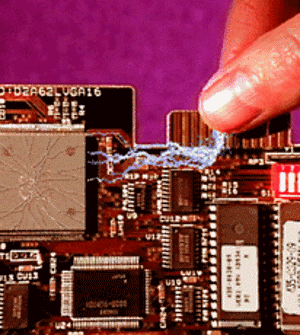Whether it’s a smartphone, smartwatch, tablet, or any other piece of mobile / wearable gadgetry, there’s little doubt that today’s consumers are more connected than ever before.

What the common users may not be aware of is that they are the biggest threat to damaging their device. And no, I’m not talking about dropping the device or getting it wet — specifically, this is in reference to electrostatic discharge (ESD), or the random voltage generated when handle their devices, which can be damaging to today’s super high-tech, but super-vulnerable semiconductors.

To avoid damage from such an event, designers and engineers must take into account ways in which to incorporate proper circuit protection design and components when building tomorrow’s gadgets.
Making their job easier are circuit protection specialists like Littelfuse. The Chicago-based company is a leader in this field, and offers a full roster of components to protect devices from ESD, as well as several design schemes and solutions to consider that ensure the semiconductor is not accidentally left vulnerable to this random charge.

There are several ways to protect electronics from damaging voltage transients, which you can review in the chart below, or in the article, How to protect electronics from damaging voltage transients like lightning and electrostatic discharge (ESD).




If this subject interests you, then you’ll be pleased to know Littelfuse just released new literature called the “Electrostatic Discharge Suppression Design Guide.” Free to download, this 18-page document summarizes several available solutions as well as the appropriate components for their end applications.
Topics covered include:
• ESD suppression technologies
• ESD damage
• ESD data protocol
• Port protection examples
• ESD suppressor product selection guide
To learn more, and to download the Guide, visit Speed2Design.com
Advertisement





